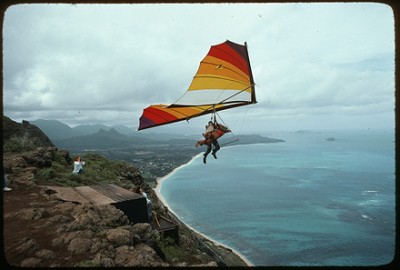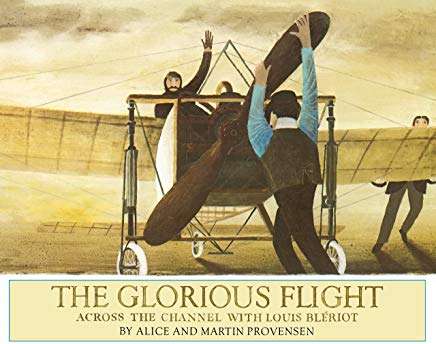The Blog
Blog Entry
Coattails Open

Does anyone understand the holdup with jet packs? Please explain. My children both ask me, and I’d like to be able to tell them it has something to do with air traffic control, Newton’s principles, liability coverage, but all I can muster is one fogey’s reassurance that some time in their lives they will hardly be able to remember an era when commuters weren’t buzzing and dipping across the rosy horizon. I’m not so sure. Man tromped around on the moon when I was little (yes, I really am old enough to remember searching for puffs of dust), the Concorde came and went in supersonic booms and nine-thousand dollar round trips, airports started requiring three hours of our vacations before takeoff, and unmanned bombers were apparently designed from balsa model gliders and hooked up to joysticks halfway around the world. By satellites, I guess, galumphing around in the troposphere, conveying Taliban hideouts and celebrity tweets. Otherwise, I’m sure there are some really cool toys the Pentagon is keeping to itself, but that, in a nutshell, is the history of popular aviation in my lifetime, oh, and video screens on your seatback.
My eight-year-old son has recently been Googling images of hang-gliders, and pricing them on eBay, though I worry about this kind of impossible dreaming that it doesn’t enjoy the traction it once did in the popular imagination. Maybe this is only nostalgia, but I’ve read a lot of elementary and middle school yearbooks recently where the kids imagine their future selves as world-travelers (hooray!), and I wonder: how do they think they’re going to accomplish all that exploration without any pilots or engineers among them? Heck, they probably picture themselves paddling in a canoe.
Allan Drummond’s The Flyers describes not only the Wright Brothers on those windy days at Kitty Hawk, but three boys and a girl who run down the dunes with their coattails open, hoping to catch some residual gusts. Before Orville so much as manages to stay aloft for twelve seconds, the children are already busy fantasizing about what this will mean for them in their lifetimes: war machines, yes, but also giant buses in the air, and voyages to Africa, space…. It’s pretty impossible today to be able to appreciate just how fantastical those must have seemed then, how daunting, how tantalizing – how newsworthy. Man achieving altitude? Really, our generation would need to establish alien contact to make similar ripples.
Wondrous scientific advances are happening every day – in medical research, and genetic understanding, and microchip refinement and application – but I’m not so sure most of us are equipped to be gazing across those cutting edges. This goes for today’s eight-year-olds probably, and several generations of eight-year-olds before that. We hear a lot about the death of math and sciences in American education, but raise your hand please if you can show me what all of those maths and sciences are for. A smaller X Box? Okay, you can sit down now. Anyone? Anything else?
We are a very long way from the handy mnemonic those Wright Brothers laid out – “take off in, land, control, and steer,” yet it’s also worth asking if this isn’t symptomatic of an era in which we like to impress each other with a lot of inaccessible jargon. The Flyers actually includes a wistful little postscript on the history of aviation after Kitty Hawk – Louis Bleriot crossing the English Channel in 1909 (also endearingly captured in Alice and Martin Provensen’s The Glorious Flight), John Alcock and Arthur Brown flying non-stop across the Atlantic in 1919. Plus all of the usual rock stars: Lindbergh of course, Amelia Earhart, Yuri Gagarin circling the earth, Neil Armstrong and his bouncy first steps, a note about jets becoming the most popular way to travel the world….
I remember – and maybe you do too – actually getting dressed up for the airplane when I was a kid, as though it were not only a privilege, but sort of a showcase as well, and you did not want to be representing the future in your flip-flops. We always assumed there was a pretty good chance that we would crash – but it was worth it. We knew each Boeing model by heart, and by sizes and numbers of engines, and debated the relative speeds and safety records and inherent modernness of all of those Seven-Something-Sevens. To enter any one of those vessels – past the unknowable thousands of levers and blinking buttons in each cockpit – was really the point, not the means, of a vacation. Even the amenities seemed more exotic than anything we were likely encounter on the other side. Those sliding plastic window shades seemed both a culmination of twentieth century engineering and a serious responsibility, and the views they afforded felt more precious – even illicit – for being only ten inches wide. You had your private button to summon one of those glamorous stewardesses – for tomato juice maybe! Okay, I cannot help myself now. Those air conditioning hoses that you can aim exactly at your head? The life vest demonstrations? My children are mostly asleep when we travel these days, or listening to iPods, or reading a book, apparently blind to the improbability of our million pound conveyance climbing forty thousand feet above the ground, although I would not be surprised to hear them wonder: “Daddy, is this what the seventies looked like?”


